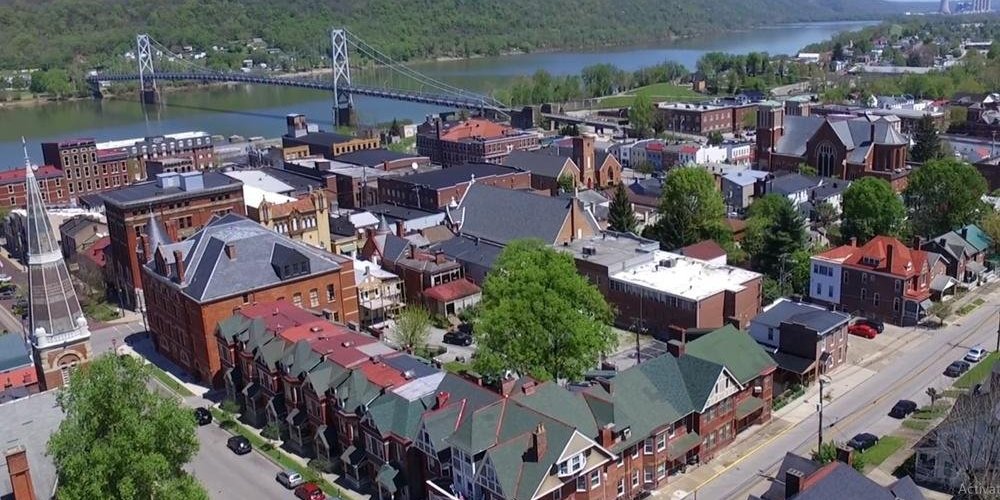Last week, Vishaan Chakrabarti, founder of PAU, unveiled his firm’s housing analysis via The New York Times. The PAU founder says there is space for up to 520,245 homes in the city on roughly 1,700 acres of unused land. Most of it would be enacted above existing single-story commercial spaces.”
The article I read about the proposal, here, said they used, “available data on vacant lots, flood-prone areas, and the location of subway stations and other mass transit options.”
Uhm, well, okay… As stated in my previous two posts, that after 30+ years of illustrating the benefits of mixed-use, walkable, infill, transit-supported design, planning, architecture, and building, why are we still trying to sell the obvious? The NYT article references how infill is still controversial… based on Boomer NIMBY-ism. Or the lack of political courage to do what is right over the long-term.
Today it is an incredibly hard lift to get short-term politicians to address long-term issues against perceived short-term public interests, such as homeless on the streets (regional issue), interest rate fluctuations (national issue), and gas prices (international issues).
California’s housing crisis became a political crisis due to the technological advancement of social media to organize and coordinate a series of disparate Bay Area groups into one large YIMBY movement. ‘Yes in My Backyard,’ led by Sonja Trauss, shifted San Francisco’s political approach to its acute housing and homelessness crisis to make these issues the city’s number one issues, beyond potholes and loss of parking spaces. The political structure of San Francisco, Oakland, San Jose, Sacramento, Los Angeles, Seattle, Portland, and San Diego followed in suit.
Social justice is today’s environmental movement of the 60s/70s, and economics in the 80s-00s. The third element of sustainability, we are learning how to build a more accessible and socially equitable city, which is why bicycles, walkability, shared mobility, complete streets, and transit-orientation are the focus of city making today. This housing crisis is a linchpin of the equity issue and I believe social equity/justice is a political crisis leaders must address. State laws are providing political cover for elected officials to pass new rules necessary to build more housing.
Lessons learned from SF’s YIMBYs to create a political crisis that makes change are:
– Organize various groups into one single-purpose, general issue group (with a catchy name)
– Use new technology (social media expanded during their rise)
– Put a charismatic leader with excellent public-speaking skills in front of the organization.
– Provide political cover for our risk-adverse Mayor(s) to approve controversial housing projects.
– Find and maintain the support of philanthropist.
– Find and support like-minded candidates running for office on this project.
– Sponsored policies dedicated to housing.
– Educate citizens via various media to show how plans can turn into better projects. Provide reasonable tradeoff scenarios to educate everyday citizens.
To make this more citizen specific, this aligns with 5 Reasons People Accept Change (borrowed from reasons why people buy retail products):
– Solves my pain – Homelessness is San Diego’s greatest pain.
– This connects me to community – Everybody loves San Diego.
– This makes my life easier – Able to conveniently access and enjoy beautiful spaces and places
– This feels luxurious – San Diego is as beautiful as any place in the world, accessible to everyone.
– This will make me more money – Our city can attract the World who’ll spend their money here.
The following are ways to shift our cultural expectations necessary to change status quo, which takes time:
Forces Within your Society: Homelessness is first. And then there are local advocacy groups or local connector/influencer people to collaborate with and an opportunity for coalition and capital building.
Forces Between Societies: Regarding housing, State Law is the agent of change.
Changes in our Natural Environment: Increased housing creates the need for high-quality amenity spaces. And climate change with longer, hotter, drier summers and wildfires are the low hanging fruit and take change out of our hands.
Invention/Stimulus Diffusion: The new-new is faster smartphone technology, which is changing how we get around our cities with shared mobility and on-demand. Millennial culture ideas are making changes via smartphone technology inventions.
Agents of Change. The best singular agents of change, are people who are culturally allowed to propose, advocate for, and succeed in making change are the following:
Students/Faculty: Schools are teaching the future and past, but not status quo.
Attorneys: Their job is manipulating the law and regulations.
Designers/Artists: All projects are new and therefore represent change.
Wealthy: Philanthropists are champions.
Advocacy Groups: But they lack any authority.
Long-Term Politicians: We have few in San Diego.
Not Agents of Change. The least acceptable, singular agents of change, people not in the cultural expectations position to propose such and will eventually be your foil are:
Chamber business interest/developers: Constituency groups that are risk adverse to change.
Government Departments/Staff: They’re trying to equitable to all citizens, as change = winners/losers, and they’re not paid to make change.
Churches / Religions: Maintain status quo.
Community/Preservation Groups: Maintain status quo.
Impoverished: Don’t experiment on the poor, they don’t have the resources to sustain failure.
Short-Term Politicians: Our city council, Mayor, and County Supervisors.
Politicians need that city-wide vision/principles/image to assist them in navigating the dichotomy of individual/small group fears versus larger city/common interests that this singular new project brings the city. And infill that builds mixed-use, walkable, transit-supported urbanism is our best sustainability tool.


